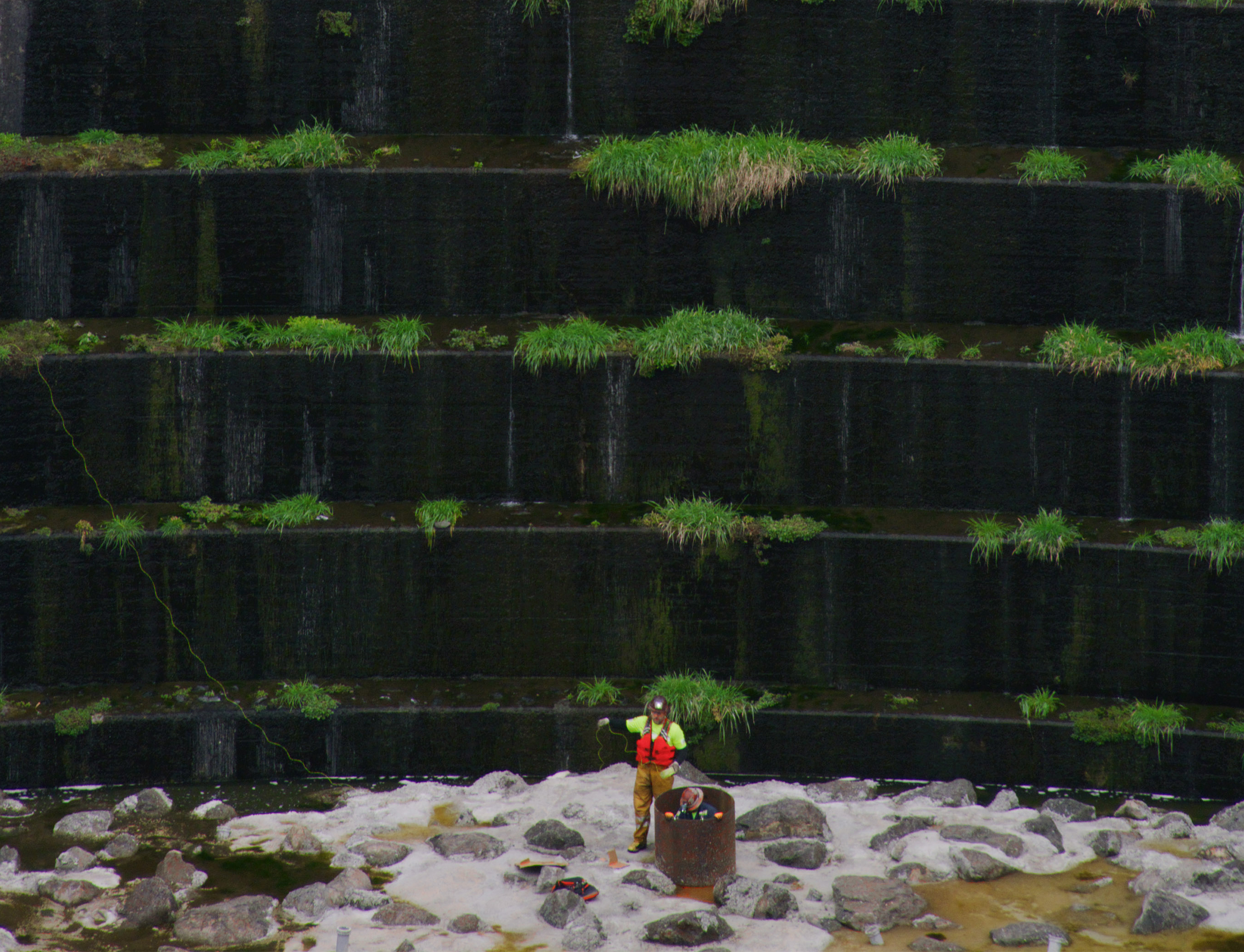'Lucy Raven: A Controlled Explosion' – ArtReview
3 October 2025
Lucy Raven captures the undoing and remaking of the American West’s landscape, and why the process is both simpler and more complicated than it appears.
In stories told along the Klamath River, salmon are not simply a food source but are also considered kin who choose to give themselves to humans. Running from Oregon through Northern California before joining the Pacific, the river once supported some of the richest salmon runs on the West Coast. For the Yurok, Karuk, Hoopa, Shasta, Klamath and Modoc peoples, those fish (the Chinook and coho species) were inseparable from spiritual practice, diet, health, tradition and economy. Their yearly return up the river represents a cycle that binds water, land and people together. The fish are greeted with ceremony, thanked and then mourned when they depart for the sea. To see salmon is to know that lifecycles continue.
When construction of the first hydroelectric dam on the Klamath began in 1903, the cycle was broken. Three more such dams were built on the river’s mainstem between then and 1964, resulting in the widescale disruption of the river’s natural flow. Concrete walls blocked the fish from reaching their spawning grounds; reservoirs warmed the water, which encouraged the breeding of parasites and sped up the growth of toxic algae blooms; sediment clogged the riverbed. Lower sections of the river gradually became starved of vital nutrients. By the start of this century the once-thriving runs had collapsed: in 2002 tens of thousands of adult Chinook salmon were seen floating dead in the lower river. (The highest estimates put the number at around 70,000.) The loss was ecological, cultural and social. Ceremonies tied to the salmon could not be performed. Food sovereignty was eroded.
American artist Lucy Raven produces photography, video, sculpture and installation, often exploring systems of power. Her new videowork, Murderers Bar (2025), takes the abovementioned history as its backdrop. The title refers to the nineteenth-century name for Happy Camp, a town on the Klamath, and points directly to the violence of settler expansion: massacres, land seizures, the gold rush. Raven positions the dams within that lineage as a structure that extends a colonial worldview, one in which a river is to be tamed and exploited. But Murderers Bar does not explicitly narrate that history, nor does it speak on behalf of those who lived it. Instead it drops viewers into the process of the Copco 1 dam’s dismantling, so that the material as much as the conceptual weight of the structure – and of its destruction – becomes the focus.
Read the full article via ArtReview here.
Image: Lucy Raven, Murderers Bar (still), 2025, video, colour, quadrophonic sound, 41 min 40 sec, aluminium and plywood screen, aluminium seating structure. © the artist, Courtesy the artist and Lisson Gallery
